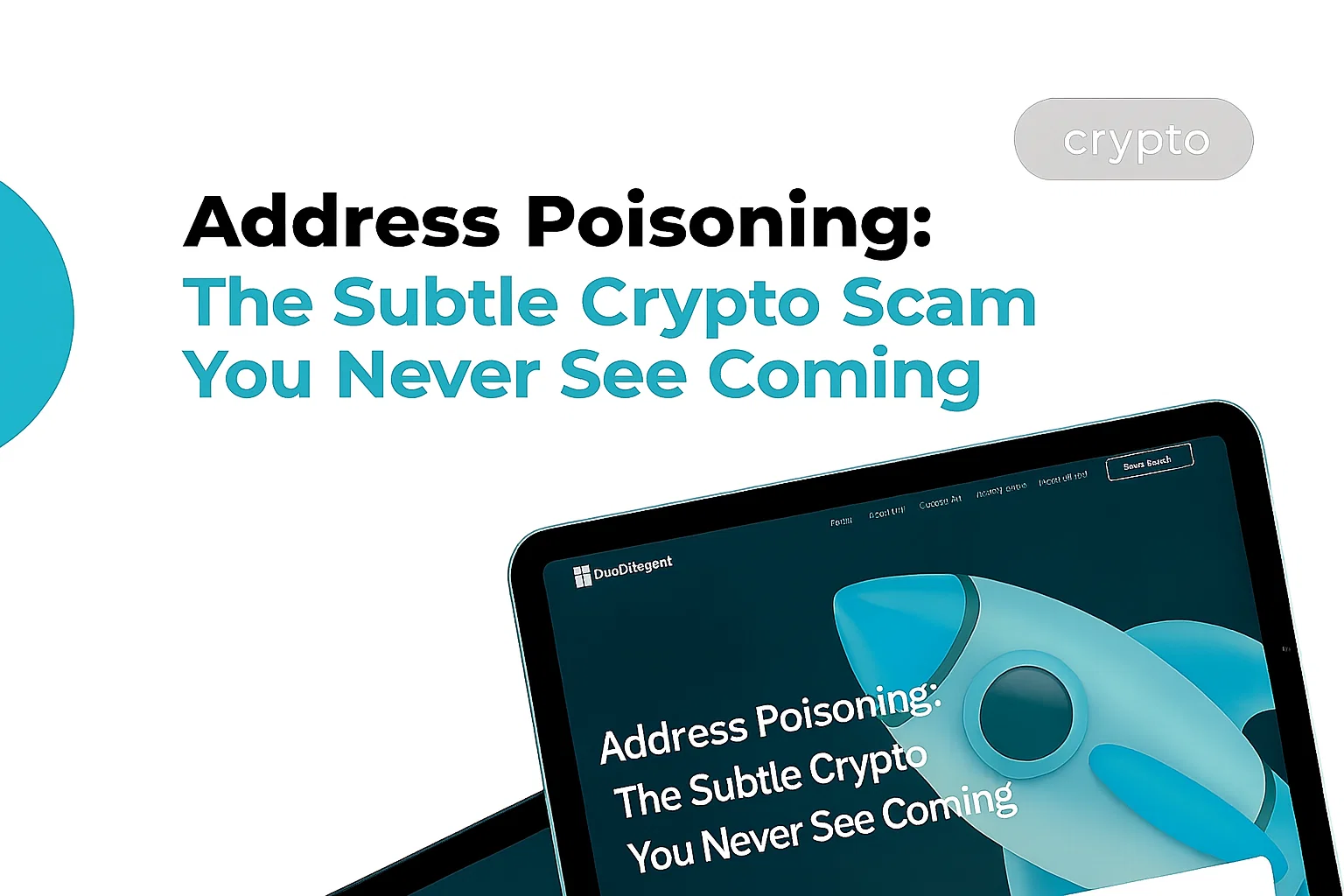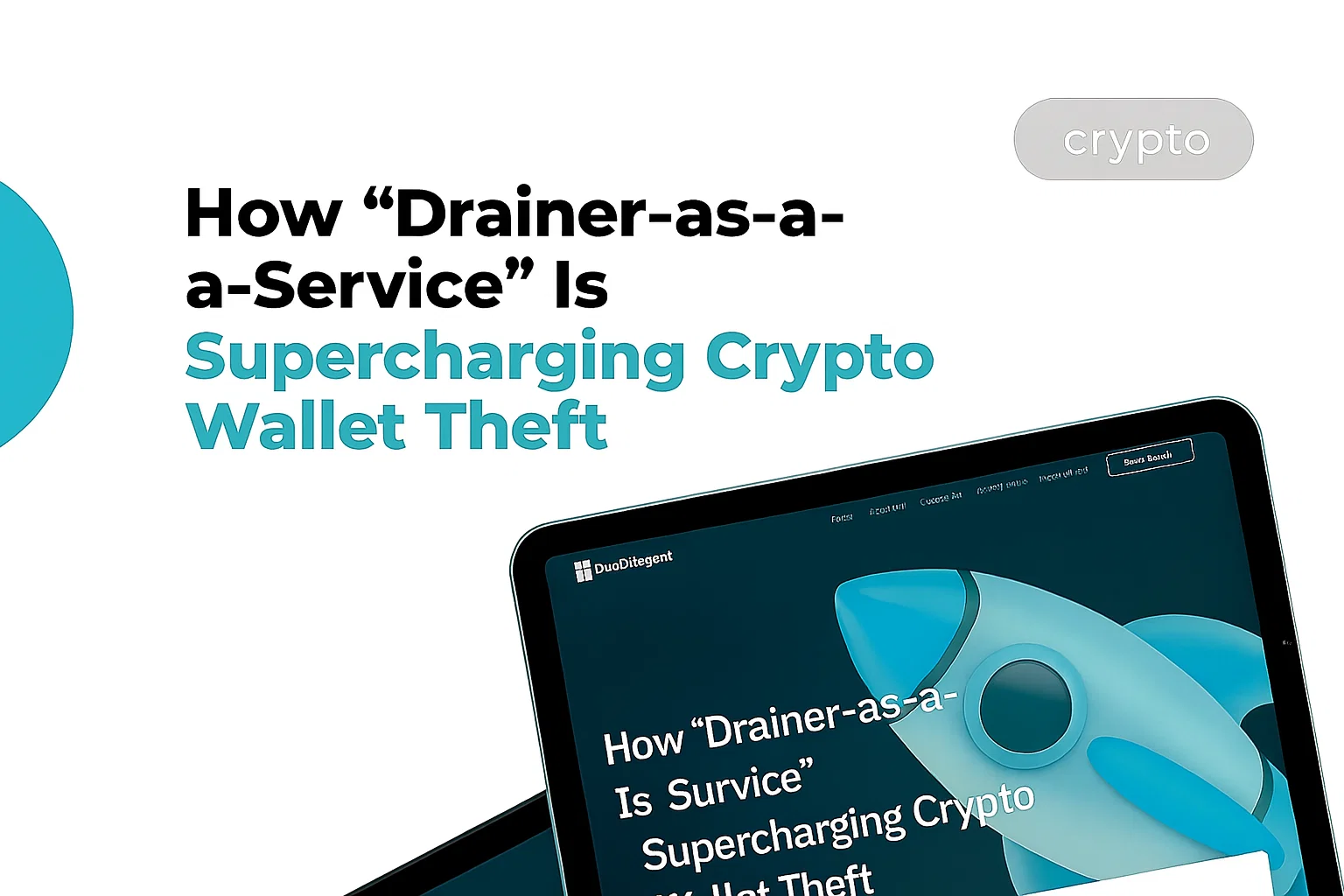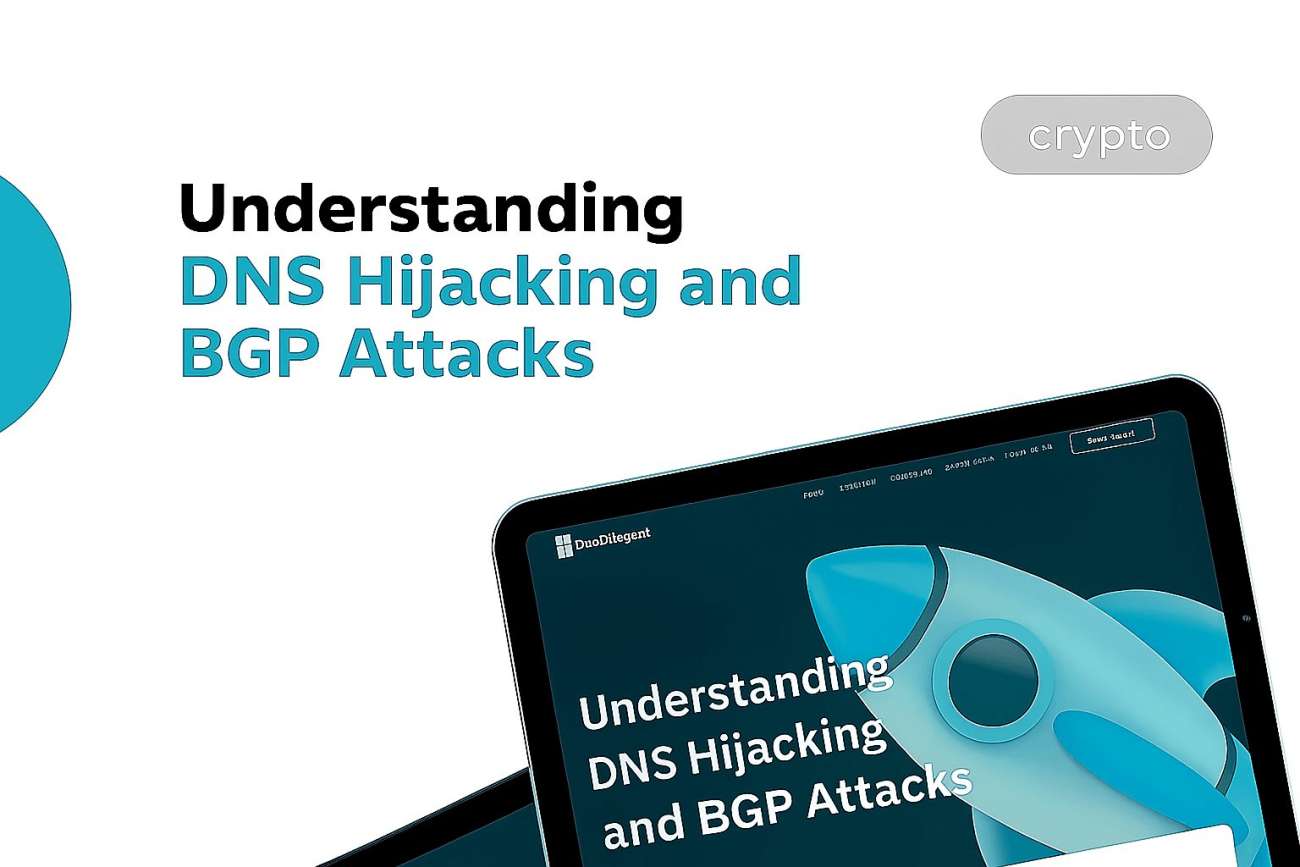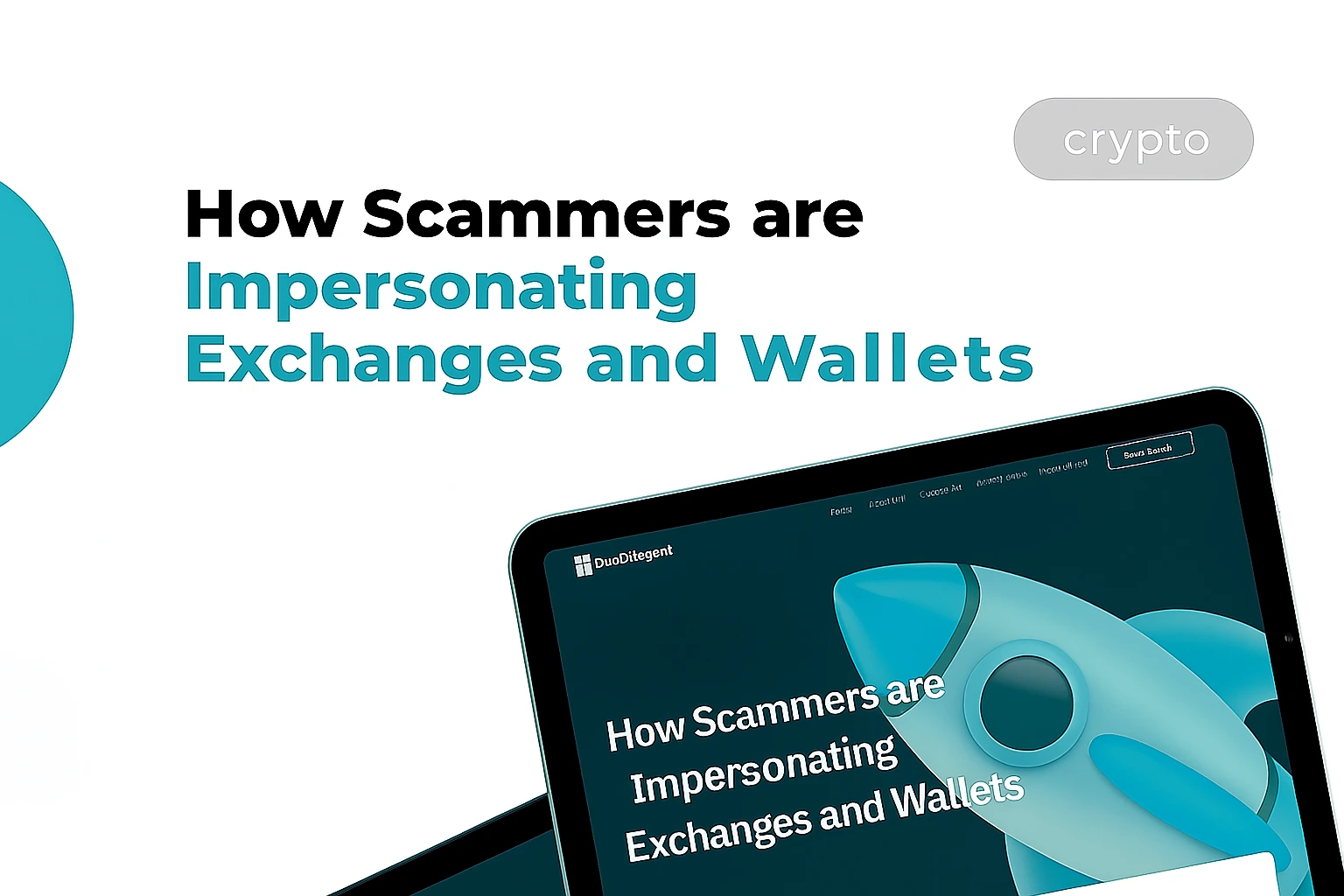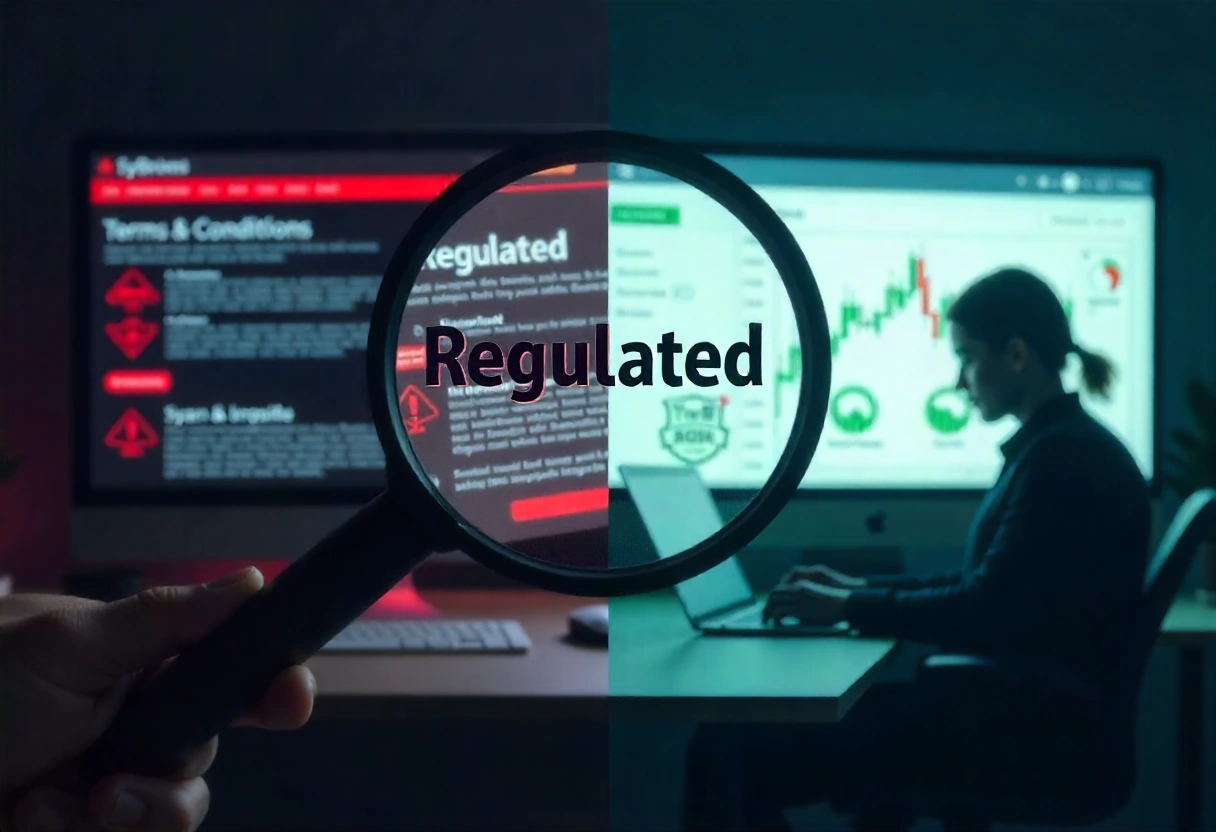
Overview
Table of Contents
In 2024 alone, cryptocurrency and forex traders lost over $1 billion to fraudulent brokers and unregulated platforms. The most devastating part? Industry experts estimate that nearly 80% of these cases could have been prevented through basic due diligence. Behind every sleek trading interface and promise of guaranteed returns lies a simple truth: scammers are counting on your excitement to override your caution.
In the exhilarating world of cryptocurrency and forex trading, the promise of fortune often overshadows the peril of fraud. For every legitimate project, a dozen scams are waiting to prey on unsuspecting investors.
Your first line of defense is not a complex trading strategy or insider knowledge – it’s a meticulous process of verification. Before you deposit a single cent, you must become an investigator and verify the credibility of the platform you intend to use.
The Regulatory Checkpoint
The absolute, non-negotiable first step is checking a broker’s regulatory status. A regulated broker is accountable to a financial authority that enforces strict rules on client fund protection, fair trading practices, and corporate transparency.
Unregulated brokers operate in the shadows with no oversight, meaning if they decide to take your money, you have virtually no recourse. Look for regulation from reputable bodies like:
- CySEC (Cyprus Securities and Exchange Commission)
- FCA (Financial Conduct Authority) in the UK
- ASIC (Australian Securities and Investments Commission)
- CFTC (Commodity Futures Trading Commission) in the US
- BaFin (Federal Financial Supervisory Authority) in Germany
Real-World Warning: In 2022, the FCA issued a warning against broker “Trade Capital Markets” after hundreds of traders reported being unable to withdraw funds. The platform had falsely claimed FCA regulation by displaying a fake license number. Traders who verified the license directly on the FCA register would have discovered the fraud before depositing funds. Those who didn’t lost an average of $15,000 each.
How to Verify Regulatory Status
- Find the license number on the broker’s website (usually in the footer or “About Us” section)
- Cross-check it directly on the regulator’s official website – never trust the broker’s word alone
- Verify the company name matches exactly – scammers often use similar names to legitimate firms
- Check for regulatory warnings – many authorities maintain public lists of unauthorized firms
If a broker’s regulatory status is unclear, impossible to verify, or non-existent, walk away immediately. No potential profit is worth the risk.
The Community Verdict
Next, you must consult the wider trading community. Scammers can build slick websites and create convincing marketing materials, but they can’t erase a trail of unhappy customers. The collective experience of traders worldwide is your most valuable resource.
Where to Research
Dive into these independent sources:
- Forums: Reddit (r/Forex, r/CryptoCurrency, r/ScamWatch), Trade2Win, BabyPips
- Review Sites: Forex Peace Army, Trustpilot, WikiFX, FPA Reviews
- Social Media: Twitter/X trading communities, LinkedIn discussions
- Regulatory Warnings: Check FCA, CySEC, and ASIC warning lists
- News Outlets: Search for “[Broker Name] scam” or “[Broker Name] warning”
Recognizing Genuine vs. Fake Reviews
Scammers increasingly plant fake positive reviews. Watch for these red flags:
- Generic language: “Great broker, very professional, highly recommend” with no specific details
- Clustered timing: Multiple 5-star reviews posted within days
- Perfect scores: No legitimate broker has only positive reviews
- Defensive responses: Overly aggressive replies to negative feedback
- Copy-paste patterns: Similar phrasing across multiple reviews
Look for patterns in user complaints. A few negative reviews are normal for any business, but a consistent stream of comments about withdrawal problems, price manipulation, slippage during major news events, or unresponsive customer service is a massive red flag.
The power of community due diligence cannot be overstated. If you discover concerning information, share it – you might save someone else from financial ruin.
Unmasking the Terms and Conditions
The lengthy terms and conditions document is often where fraudulent brokers hide their most predatory clauses. While reading through pages of legal jargon may be tedious, it is absolutely crucial to your financial safety.
Critical Sections to Examine
Withdrawal Terms:
- Are there strange conditions or exorbitant fees required to access your money?
- What is the stated withdrawal processing time? (Be wary of anything over 5 business days)
- Are there minimum withdrawal amounts or maximum withdrawal limits?
- Do they require excessive verification documents that seem designed to delay?
Account Closure Clauses:
- Can the broker close your account for vague reasons?
- Terms like “unusual trading activity,” “at our sole discretion,” or “violation of trading patterns” are classic traps
- Do they reserve the right to cancel your profits retroactively?
Bonus Conditions:
- Deposit bonuses often come with trading volume requirements that make withdrawal nearly impossible
- Calculate if you could realistically meet the conditions (e.g., “trade 50x the bonus amount within 30 days”)
Dispute Resolution:
- Is there an arbitration clause? Where is it located?
- Do you have the right to pursue legal action, or are you forced into their chosen arbitration?
A legitimate broker will have clear, fair, and easily understandable terms. If you need a legal degree to understand the withdrawal process, that’s intentional – and a warning sign.
Additional Red Flags
Beyond the three main checkpoints, watch for these warning signs:
- Unsolicited contact: Cold calls or messages promising guaranteed returns
- Pressure tactics: “Limited time offer” or “exclusive opportunity” to rush your decision
- Guaranteed returns: No legitimate trader can guarantee profits
- Requests for remote access: Never allow anyone to control your computer
- Unusual payment methods: Requests for cryptocurrency-only deposits, gift cards, or wire transfers to personal accounts
- Clone firms: Using names nearly identical to regulated brokers
- Offshore registration: Companies registered in jurisdictions with weak oversight (often Vanuatu, Belize, or St. Vincent)
Your Broker Verification Checklist
Before depositing funds with any broker, complete this three-step verification process:
Step 1: Regulatory Verification (15 minutes)
- Find the broker’s claimed regulatory license number
- Verify it directly on the regulator’s official website
- Confirm the company name matches exactly
- Check regulatory warning lists for this broker
- Screenshot your verification for records
Step 2: Community Research (30 minutes)
- Search “[Broker Name] review” on at least 3 independent platforms
- Read both positive and negative reviews for patterns
- Search “[Broker Name] scam” or “withdrawal problems”
- Check Reddit and forum discussions from the past 6 months
- Look for regulatory warnings or news articles
- Ask questions in trading communities if unsure
Step 3: Terms & Conditions Audit (20 minutes)
- Read the full withdrawal policy
- Identify all fees associated with deposits and withdrawals
- Review account closure and dispute resolution clauses
- Calculate bonus requirements (if accepting a bonus)
- Flag any confusing language for clarification with support
- Test customer service responsiveness before depositing
If the broker fails ANY of these checks, do not proceed.
Taking It Further
Due diligence doesn’t end after opening an account. Consider these ongoing practices:
- Start small: Make a minimum deposit first and test the withdrawal process with a small amount
- Document everything: Save emails, chat logs, screenshots, and transaction records
- Monitor regulatory status: Re-check periodically, as licenses can be revoked
- Stay informed: Join trading communities to hear about emerging scams
- Report suspicious activity: Contact the relevant regulator if you suspect fraud
The Bottom Line
The broker you choose is the foundation of your trading career. No strategy, no matter how sophisticated, can protect you from a fraudulent platform. The most successful traders aren’t necessarily the most skilled – they’re the most careful about who they trust with their capital.
By taking these steps – verifying regulation, consulting the community, and scrutinizing the fine print – you can significantly reduce your risk of falling victim to a scam. Remember, a platform that is worthy of your trust will be transparent and proud of its regulatory standing, similar to what you would expect from a top forex broker.
Before you sign up with any broker, use our Broker Verification Tool to confirm their legitimacy, or browse our comprehensive Broker Review section where we’ve analyzed hundreds of platforms. Your financial security is worth the extra 30 minutes of research.


